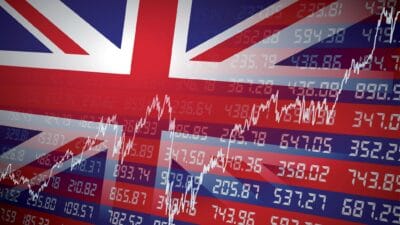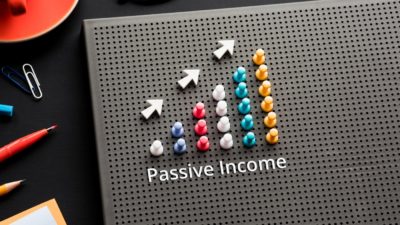Investors starting out on the income investing path sometimes get themselves into a tangle over yield. Accustomed to thinking in terms of conventional savings accounts, they tend to overlook one of the most powerful aspects of investing in shares — the fact that dividends tend to grow over time.
As such, while a share’s current dividend yield is an important aspect of income investing, it’s only one aspect.
And even after screening out companies with other characteristics that you might not like — high debts, low dividend cover, a too-high price-earnings ratio (P/E) and so on — it’s always useful to compare a company’s current dividend yield with the growth that it has delivered in its dividend payouts over time.
Projecting that growth into the future gives you a handy clue as to what you might expect by way of bought dividend yield — in other words, not the current dividend yield, but the yield figure that actually relates to the price that you paid for a share.
Yield: dividend over share price
But first, let’s step back and remind ourselves of the basics.
Dividend yield is easily calculated — it’s the figure you see in newspapers, and on websites.
That said, the yields quoted on some websites can occasionally be wrong — Google Finance, for instance, can be thrown by quarterly dividend payouts, and payouts reported in currencies other than pounds sterling.
At the time of writing, for instance, Google is telling me that Royal Dutch Shell is yielding 0.9%, and not the 5.8% that is actually correct.
So if a company’s shares are priced at 100p, and its most recent annual dividend was 5p, then the dividend yield is of course 5%. That 5p might have been spread out over an interim half-year payout of 2.5p and a final full-year payout of a further 2.5p, but the key thing is the total paid out in a year.
3.9% vs. 3.3%
So let’s plug some real companies into the calculation, and see what emerges.
As an income investor, we might like the look of defence contractor BAE Systems (LSE: BA), for instance, which — at the time of writing — offers a yield of 3.9%. That’s a fifth higher than the yield offered by the FTSE as a whole, and of course massively higher than the payout from a conventional savings account.
Should you invest £1,000 in BP right now?
When investing expert Mark Rogers has a stock tip, it can pay to listen. After all, the flagship Motley Fool Share Advisor newsletter he has run for nearly a decade has provided thousands of paying members with top stock recommendations from the UK and US markets. And right now, Mark thinks there are 6 standout stocks that investors should consider buying. Want to see if BP made the list?
But is it the best income share on offer in that aerospace and defence sector? The industry isn’t one that is particularly crowded, and so our eyes might alight on FTSE 250-listed Cobham (LSE: COB), which at a dividend yield of 3.3% is offering virtually the FTSE’s average dividend yield.
So is BAE Systems is the better income share? It certainly looks to be, as it offers a yield of 3.9% versus Cobham’s more pedestrian 3.3%.
Not so fast.
High yield, low growth vs. low yield, high growth
This is where dividend growth comes into play. Back in 2010, BAE Systems declared dividends totalling 17.5p. In 2014, the figure was 20.5p. That’s a compound growth rate of 4.0%.
But over at Cobham — which is noted for steadily growing its dividend, and even managed to do so during the 2007-2008 recession — the picture is rather rosier.
Cobham’s declared dividend for 2010 was 6.0p and 10.65p for 2014. That’s an altogether meatier compound growth rate of 15.4% — a tad higher than the company’s 13.5% growth rate over the longer 2005-2014 timescale.
Over time, ‘bought yield’ matters
So which looks the better bet for an income investor now? On the assumption that Cobham can continue a dividend growth rate that stretches back to 2005 and beyond, the answer has to be Cobham.
Because while the income from BAE Systems is higher to begin with, the payouts from Cobham soon outstrip it — doing so in just two years, in fact. And after five years, the income from Cobham will be 40% higher than the income from BAE Systems.
At which point, the ‘bought dividend yield’ on Cobham — that is, the current dividend with reference to the price originally paid for the shares — will be 6.7%, versus 4.7% for BAE Systems.
After ten years, the difference is even greater. Assuming that both companies maintain their dividend growth rates, an investment in BAE Systems will have a bought yield of 5.8%. At Cobham, it’s a juicy 13.8%.
Newspapers and websites, of course, will still be quoting the current dividend yield, based on the current share price and current dividend. And quite possibly, Cobham will again be the share with the lower current yield.
Ice the cake with a value entry point
And yet, as you’ll read in the disclosure statement below, among the shares that I own are Royal Dutch Shell and BAE Systems, but not — as yet — Cobham.
Why?
Greed is the answer. Since mid-2012, I’ve been waiting for Cobham shares to present a more attractive entry point. And while they’ve come close, so far no banana.
That could change — and the share price has been drifting downwards in recent weeks. At which point, I’ll buy.
Which, I guess, makes me an income investor with a bias towards value. But that’s another story.







